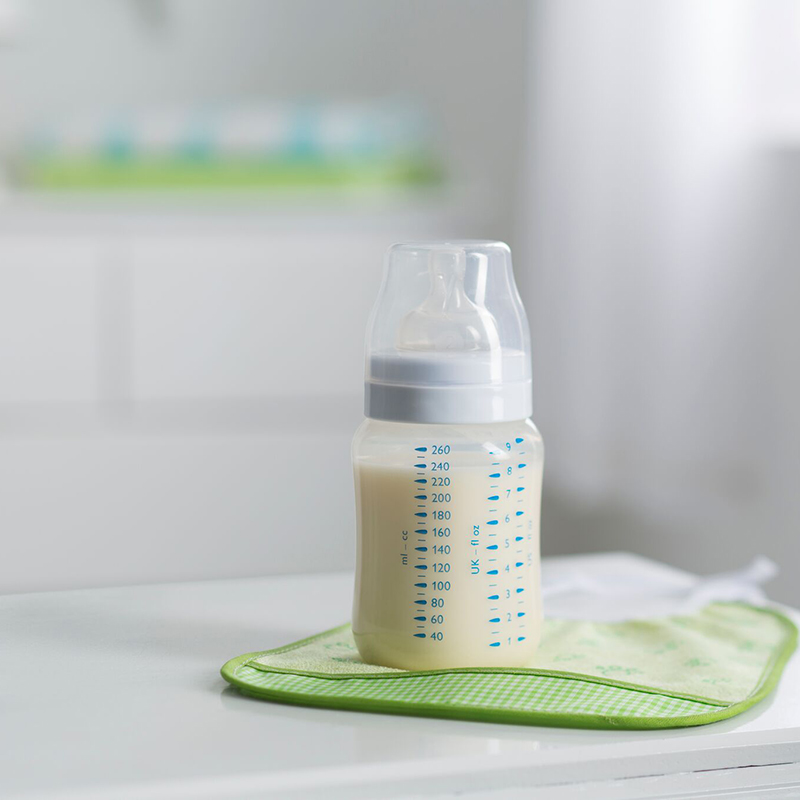Pasteurized breast milk: Human milk bank and infant nutrition research institute opens in San Diego

31 Oct 2022 --- A Human Milk Institute (HMI) has launched in San Diego, US. Through a combination of researchers, educators and physicians, the entity hopes to create a global hub to accelerate knowledge and understanding of the application of human breast milk and improve lifelong health by “tackling global health threats, the growing inequities across society and environmental crises.”
NutritionInsight speaks with Dr. Lars Bode, HMI’s founding director, alongside Dr. Lisa Stellwagen, executive director at the HMI – both professors of pediatrics at the UC San Diego School of Medicine.
“Human milk contains a large variety of bioactive components that benefit the breastfed baby and, in some cases, the breastfeeding mother. One of our goals is to discover the underlying molecular mechanisms and then apply specific human milk bioactives to diseases outside the maternal-infant space,” says Bode.
He explains that the institute serves as a location for parties to coordinate and interact in a single, go-to place and be able to speak with one voice. Research can inform clinical care, clinical care can inform research, and both can help educate.
“Together with HMI faculty Dr. Philip Gordts, we have shown that a specific human milk oligosaccharide (HMO), a complex sugar, reduces atherosclerosis – one of the hallmarks leading to heart attack and stroke,” Bode notes.
“The preclinical data, made of tissue culture and animal models, is extremely strong, and the project is now moving to human clinical trials.”
 Stellwagen highlights a need for the HMI as science on the biology of human milk needs to advance.Breastfeeding for women and infants
Stellwagen highlights a need for the HMI as science on the biology of human milk needs to advance.Breastfeeding for women and infants
Bode continues to explain that this particular HMO can be synthesized at a large scale and low cost. “We don’t anticipate any adverse effects since the molecule is part of human milk and we feed it to babies every two to three hours for months, if not years.”
The researchers state that babies who receive human milk and women who breastfeed have a lower risk of developing heart attack and stroke.
“We have identified a specific component in human milk that in a synthesized form could serve as a therapeutic for adults at risk. We have also shown that HMO can reduce joint diseases like rheumatoid arthritis and osteoarthritis,” Bode explains.
Stellwagen highlights a need for the HMI as science on the biology of human milk needs to advance.
“The issues with inadequate support for breastfeeding and human milk nutrition in this country impact the most vulnerable; families who live in poverty and those who lack access to support during and after childbirth,” she says.
“This leads to a lack of human milk feeding in these children and poor health outcomes for the child and family.”
The milk bank in practice
The milk supply in the bank comes from women that have extra milk and are willing to donate their milk without financial compensation. Stellwagen delves into the many reasons for overproduction and how extensive milk supply can occur.
“There tend to be women who are high volume milk producers, working women who make more than the baby can drink, or women who pump and end up with milk their baby doesn’t like the taste of.” The donors undergo extensive testing, medical and lifestyle history taking and approval from their medical providers to be allowed to donate.
The donors undergo extensive testing, medical and lifestyle history taking and approval from their medical providers to be allowed to donate.
“Some babies become allergic to something like the cow’s milk protein in their mother’s milk, and the mother has milk her baby can’t drink due to the allergy, or while she starts an elimination diet. There are also women whose child has died where they express milk as part of their healing and grieving. They feel like a mother in this, saving other babies’ lives and making something good come from something tragic.”
She says that the donors undergo extensive testing, medical and lifestyle history taking and approval from their medical providers to be allowed to donate.
“All donated milk is frozen, and the minimum donation is about 100 ounces, but some women donate thousands of ounces of milk. In 2021, the non-profit Human Milk Bank Association of North America distributed 9.2 million ounces of pasteurized donor milk,” says Stellwagen.
“The milk is all heat pasteurized and undergoes stringent safety steps before being sold – at a cost – to hospitals to feed small or ill infants. About 30-50% of the pasteurized donor milk in this country goes to families at home to feed newborns when they do not have enough, or cannot make milk, for example, in the case of breast cancer surgery, adoption or surrogacy.”
 Technology creating cell-based human milk has recently been explored to “fill the gap between infant formula and human breast milk.”Human milk’s expanded potential
Technology creating cell-based human milk has recently been explored to “fill the gap between infant formula and human breast milk.”Human milk’s expanded potential
The interest in human milk for adults has been previously explored on NutritionInsight. Trulacta launched a supplement made of human milk last year. Research conducted by the company showed that human milk supports people with autoimmune diseases, aids the body’s management of inflammation, optimizes sleep, reinforces the immune system and benefits the microbiome.
Technology creating cell-based human milk has also been explored to “fill the gap between infant formula and human breast milk.”
However, Bode stresses, “It is crucial to emphasize that we are not saying that people of all ages should consume human milk. We strive to understand the underlying biology and then develop molecules from human milk that could serve as therapeutics for people of all ages.”
“Human milk should be reserved for human babies and preterm babies in particular. Human milk saves preterm infants’ lives, and they need it the most.”
The same argument has recently been highlighted as safety for human milk consumption and supplements made of human milk need further advancement.
By Beatrice Wihlander












